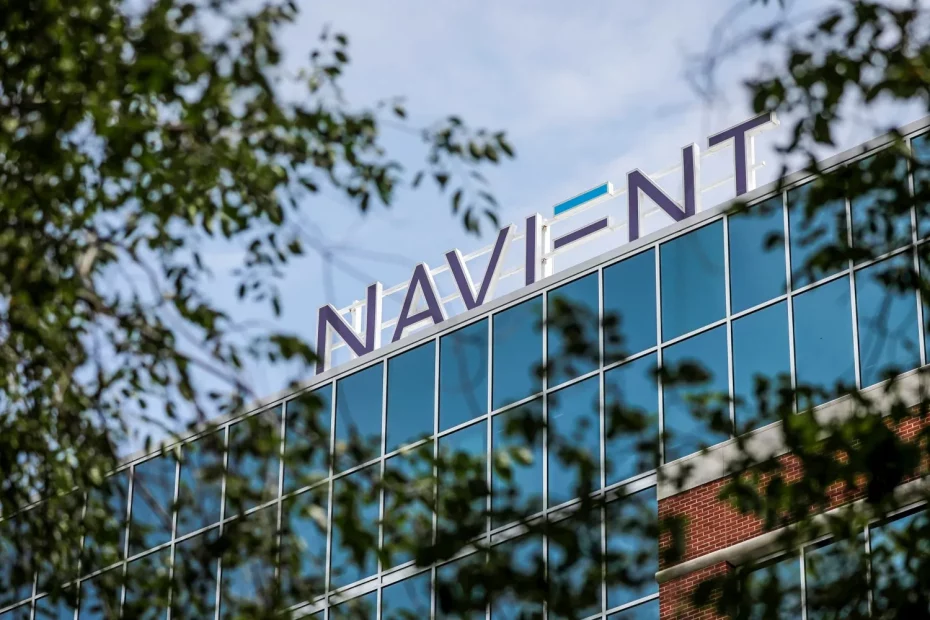Anúncios
In the labyrinthine landscape of student loans, Navient stands as a prominent player, wielding influence over the financial destinies of countless individuals pursuing higher education.
This review seeks to dissect the multifaceted nature of Navient student loans, delving into their origins, operational nuances, and the experiences of borrowers who traverse the intricate web of educational debt.
Anúncios
Origins and Evolution:
Navient emerged from the chrysalis of Sallie Mae in 2014, evolving into a distinct entity dedicated solely to servicing and managing student loans. Its roots trace back to the government-sponsored enterprise created in the early 1970s to support federal student loan programs.
The transformation aimed at streamlining operations and enhancing customer service, a pivot that has garnered both praise and criticism over the years.
Anúncios
Operational Mechanisms:
Navient primarily operates as a loan servicer, acting as an intermediary between borrowers and the federal government. Its responsibilities encompass disbursing loan funds, managing repayment plans, and handling customer inquiries.
The company services both Federal Family Education Loan (FFEL) Program and Direct Loan Program loans, making it a pivotal cog in the student loan machinery.
Anúncios
However, the mechanics of Navient’s operations have not been immune to scrutiny. Allegations of deceptive practices, predatory lending, and insufficient communication with borrowers have been leveled against the company. These allegations have sparked investigations and lawsuits, casting a shadow over its reputation.
Interest Rates and Repayment Plans:
One of the critical aspects influencing borrowers’ experiences with Navient lies in the interest rates and repayment plans offered.
Anúncios
The interest rates on federal student loans are set by the government and can vary depending on the type of loan. Navient plays a crucial role in implementing these rates and assisting borrowers in selecting appropriate repayment plans.
The company offers a range of repayment options, including income-driven plans, graduated repayment, and standard repayment. While these options provide flexibility, critics argue that more could be done to simplify the process and ensure that borrowers are aware of the full spectrum of choices available to them.
Customer Service and Communication:
Navigating the complex terrain of student loans can be a daunting task, and the role of customer service in this context cannot be overstated.
Navient has faced criticism for alleged lapses in communication with borrowers, with accusations ranging from failure to provide adequate information on repayment options to alleged mismanagement of borrower accounts.
On the flip side, some borrowers have reported positive experiences with Navient’s customer service, citing helpful and knowledgeable representatives who facilitated smoother navigation through the intricacies of loan repayment.
The Human Element:
Behind the statistics and legal battles, there are real individuals grappling with the weight of student loan debt. Personal stories of borrowers paint a vivid picture of the impact that Navient has on lives and aspirations.
Some express gratitude for the lifeline provided by student loans, enabling them to pursue education that might otherwise be out of reach. Others, however, share tales of frustration, feeling trapped in a cycle of debt exacerbated by what they perceive as unresponsive or unhelpful practices from Navient.
The Legal Landscape:
Navient has not been immune to legal challenges. Investigations and lawsuits from various quarters, including state attorneys general and federal agencies, have marked its journey.
Accusations of steering borrowers into more expensive repayment plans, misallocating payments, and providing misinformation have fueled the legal battles, creating a narrative that underscores the need for greater accountability in the student loan industry.
A Call for Reflection and Change
As we reflect on the intricate tapestry of Navient’s role in the realm of student loans, it becomes evident that the story extends beyond a mere financial transaction.
It is about dreams pursued, opportunities seized, and, at times, the weight of debt that accompanies these aspirations. The dichotomy of positive and negative experiences raises questions not just about Navient but about the entire infrastructure that governs educational financing.
Transparency and Education:
One crucial aspect that demands attention is the need for enhanced transparency. Borrowers must be provided with comprehensive and easily understandable information about their loans, including interest rates, repayment plans, and the implications of each choice.
The complexity of student loans often leaves individuals bewildered, and an informed borrower is better equipped to make sound financial decisions.
In tandem with transparency, there is a pressing need for financial education. Many borrowers, particularly those entering college, might not fully comprehend the long-term implications of their borrowing decisions.
Introducing financial literacy programs could empower students to make informed choices and navigate the student loan landscape with greater confidence.
Customer-Centric Approach:
Navient, like other loan servicers, must embrace a more customer-centric approach. While positive stories of helpful customer service exist, the negative experiences reported by some borrowers cannot be ignored.
Strengthening communication channels, ensuring timely and accurate information dissemination, and addressing customer concerns with empathy are essential steps toward building trust.
Moreover, incorporating technology-driven solutions can streamline the loan management process, making it more accessible and user-friendly. Mobile apps, intuitive online platforms, and proactive communication strategies could contribute to a more positive borrower experience.
Legal Reckoning and Industry Accountability:
The legal challenges facing Navient underscore the need for industry-wide accountability. The student loan system is complex, and its intricacies can potentially be exploited. Robust regulatory frameworks and vigilant oversight are necessary to protect borrowers from predatory practices.
While legal battles are ongoing, it is also an opportunity for the industry to reassess its practices and advocate for reforms that prioritize the welfare of borrowers.
Proactive measures to address systemic issues, such as standardizing communication protocols, ensuring fair and transparent billing practices, and implementing checks on loan servicing companies, can contribute to a more equitable system.
Government Intervention and Policy Reform:
Ultimately, the role of the government in shaping the student loan landscape cannot be understated. Policymakers must continually reassess the efficacy of existing programs and be open to reforms that prioritize affordability, accessibility, and fairness.
Consideration should be given to the possibility of exploring alternative models of student financing, such as income-sharing agreements or increased funding for need-based grants. These measures could potentially reduce the burden of debt on students and foster a more sustainable approach to financing higher education.

In conclusion, the review of Navient student loans is not just an evaluation of a single entity but an examination of the broader challenges within the student loan ecosystem. The experiences of borrowers, the legal battles, and the operational intricacies collectively underscore the need for reflection and reform.
As we navigate the future of student loans, it is crucial to envision a system that prioritizes the educational pursuits of individuals while safeguarding them from the pitfalls of predatory practices.
The call for transparency, a customer-centric approach, legal accountability, and policy reform should echo not just within the walls of Navient but resonate throughout the entire student loan industry.
Only through collective efforts and a commitment to fairness can we truly navigate towards a more equitable and sustainable future for educational financing.
